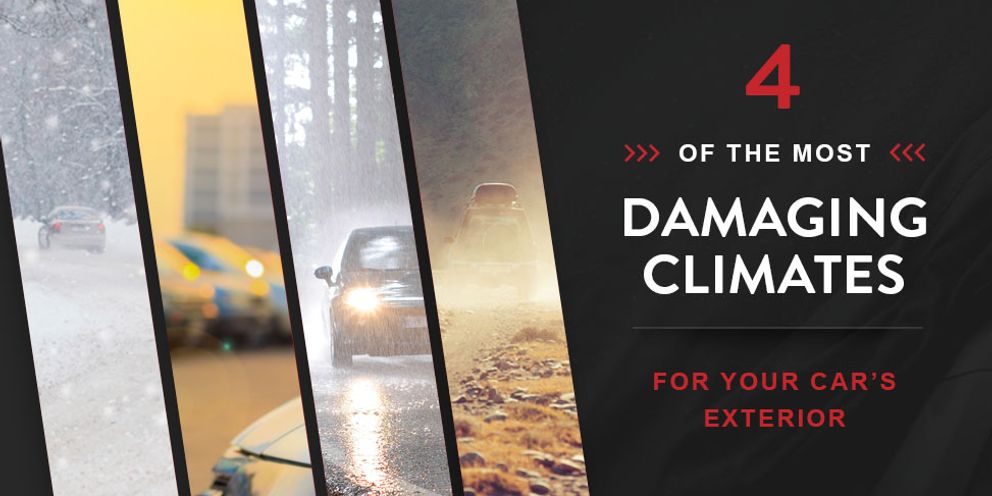
4 of the Most Damaging Climates for Your Car’s Exterior
When the weather changes, people adjust their clothing accordingly to match the climate. When it’s cold, you’d expect to see people wear extra layers to cover their skin. To prevent harm when it’s sunny, people apply sunscreen and sit in the shade. However, many people do not provide their cars with the same level of care. When our vehicles experience different climates or extreme fluctuations in weather conditions, it can cause severe damage. Over time, damage such as corrosion and mold becomes apparent, and you may need to pay for costly repairs. Let’s have a detailed look at the most damaging climates for your car’s exterior and how a car cover can help keep your vehicle safe.
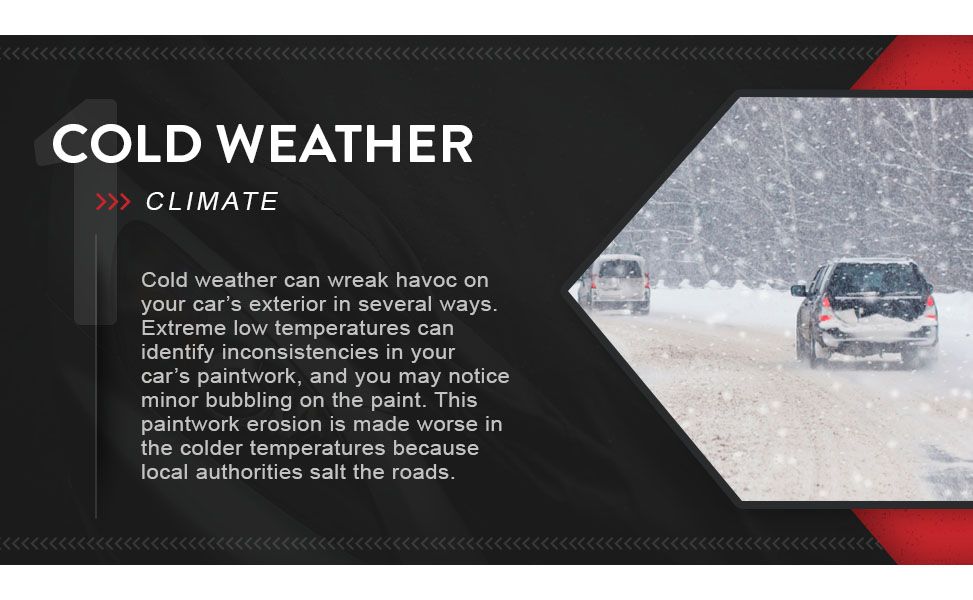
1. Cold Weather
Cold weather can wreak havoc on your car’s exterior in several ways. If you have any small cracks in your windshield, the colder temperatures can cause a contraction in the glass. This process leads to the cracks spreading across your windshield. Because temperatures are usually lower overnight, an unprotected windshield may experience considerable damage by the time you get up in the morning. Extreme low temperatures can also identify inconsistencies in your car’s paintwork, and you may notice minor bubbling on the paint. This paintwork erosion is made worse in the colder temperatures because local authorities salt the roads.
Salt is particularly hard-wearing on your car’s paintwork, and it also sticks to the undercarriage. By wearing down the protective paint layer, salt makes it easier for rust to form on your car's exterior. When rust begins to spread on your vehicle’s chassis, it can be difficult to stop. Untreated rust can lead to the appearance of holes and cracks that can be costly to repair. In the worst-case scenario, rust may make your car unsafe and illegal to drive. Parking your car outdoors in the snow leaves it vulnerable to moisture damage when the snow and ice melts, seeping through the gaps in your doors and hood. This can lead to mold and corrosion.
When combating the threat of erosion, it’s essential to wipe your car down with a soft cloth after driving. Be gentle, and don’t use a circular scrubbing motion, as this could cause the salt to scratch your vehicle. Use a hose to spray the car’s undercarriage, and keep the car in a garage if possible. If you live near the ocean, the air will carry more salt. You’ll need to wash your car’s exterior more often than city dwellers to reduce the risk of salt damage. It’s best to wash your car during the day because this offers the best chance of your vehicle being dry before the temperature becomes colder during the night.

2. Hot Weather
Hot and sunny weather can also pose a risk to your car’s exterior. When the sun’s UV light makes contact with your car’s paintwork, it causes the molecules present in the paint to break down. Over time, this damage becomes apparent when your paintwork begins to look faded and dull. Aside from the aesthetic problems, this fading effect also leaves your car more vulnerable to rusting when there is moisture in the air. Summers in many states are hot and humid, so it’s vital to protect your vehicle from the harmful effects of UV light. Many people try to park their cars in the shade when the weather is hot, but this can expose your car’s exterior to further potential damage.
When parking under a tree, you may find birds living in the branches. Bird feces contains uric acid that can burn through the outer layer of your car’s paintwork. Tree sap is also a very sticky substance that is highly challenging to remove and may require the use of harsh chemicals. It’s crucial to remove these contaminants from your car’s surface as soon as possible.
However, it is not practical to stand in your driveway cleaning your car for twenty minutes in the morning before driving to the store. Wiping bird feces off your vehicle is also an unpleasant and unhygienic experience. Applying a protective coating to your car’s paintwork is one option for limiting damage, but this can be a costly process over an extended period. A car cover is an affordable and simple way to prevent damage from wildlife.
Shop Our Entire Selection of Car Covers
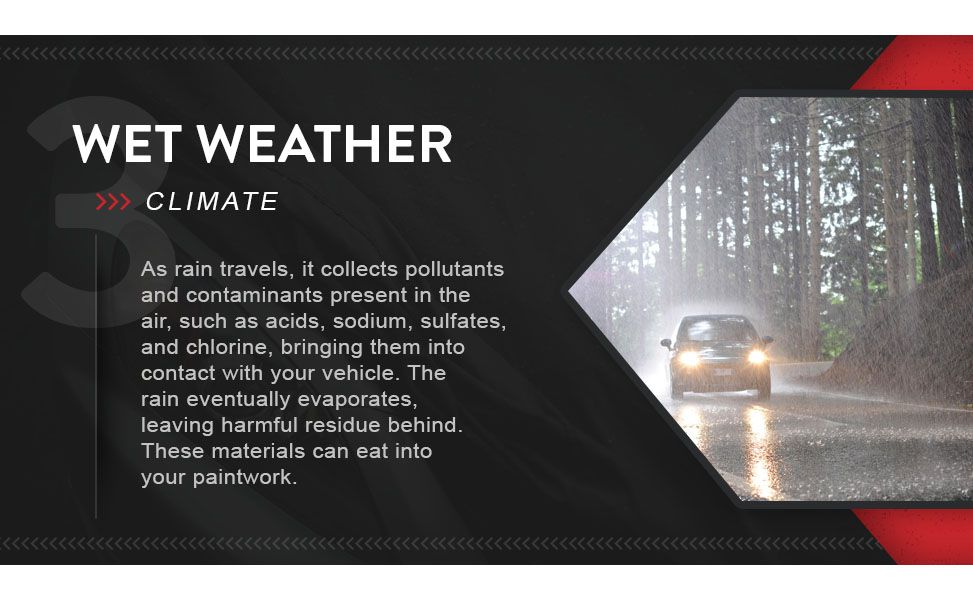
3. Wet Weather
Many car owners are delighted when the rain comes and washes the dirt off their car exterior. However, rain can cause considerable damage to your car’s paintwork. As rain travels, it collects pollutants and contaminants present in the air, such as acids, sodium, sulfates, and chlorine, bringing them into contact with your vehicle. The rain eventually evaporates, leaving harmful residue behind. These materials can eat into your paintwork and cause unsightly water stains on the car’s surface.
It’s also unlikely rain will wash much of the ingrained surface dirt off your vehicle. Rain does not land with much pressure, so it’s likely to bring more contaminants without adding any benefits to your car’s cleanliness. This factor is why commercial car washes use high-pressure water systems to blast pollutants from the paintwork. Although it may seem counterintuitive, it’s a good idea to hose your car down after a rainstorm. If you’ve time, take a cloth and wipe as much water as possible off your vehicle to help it dry more quickly.

4. Windy Weather
Wind alone will not damage your car exterior. The dust, dirt particles, and other contaminants that wind carries onto the car’s surface cause severe issues. These minuscule substances can find gaps in your car’s paintwork, making their way through the clear coat layer. If these particles contain moisture, they can contribute to premature rusting and costly repairs.
Windy weather can be especially devastating if it is part of a dust or sandstorm. Sandstorms carry billions of tiny particles through the air at high speeds, acting like sandpaper on your car’s exterior. Because the substances are fast-moving, they can cause chips and cracks on the paintwork outer layer. It’s not only car paintwork that sandstorms damage. If your windshield has any small cracks, these wind-driven particles can find their way into the gaps. Over time, they can cause the cracks to widen, eventually leading to a windscreen repair or replacement.
Leaving your car exposed to the elements during a sandstorm also allows contaminants to enter your vehicle through the front grill. While this won’t directly damage the car’s exterior, this outer entrance point means the particles can build up and clog parts of your engine. Sandstorms don’t just blow at one height. The particles swirl through the air and can make contact with the vehicle’s undercarriage. This constant scraping can damage the outer materials and lead to rusting.
High winds can also carry larger debris, such as tree branches, small rocks, or leaves, which can collide with your car, contributing to chips or cracks in the exterior, and, in some cases, causing large dents. While a car cover can’t protect against falling tree branches denting your car, it can minimize the severity of the damage, ultimately costing you less in repairs.
How to Protect Your Car with a Car Cover
Whether your car is indoors or outdoors when not in use, one of the most effective protective strategies is to use a car cover. These coverings offer considerably more protection than leaving your vehicle exposed to the elements. Using a car cover, you can extend your vehicle’s lifespan and potentially spend less on expensive repair work and repainting. Car covers come in many different sizes and use various materials. It’s essential to contact a trusted supplier who can offer expert advice on which model is the most suitable for your needs. When you find the right covering for your vehicle, you can enjoy many advantages.
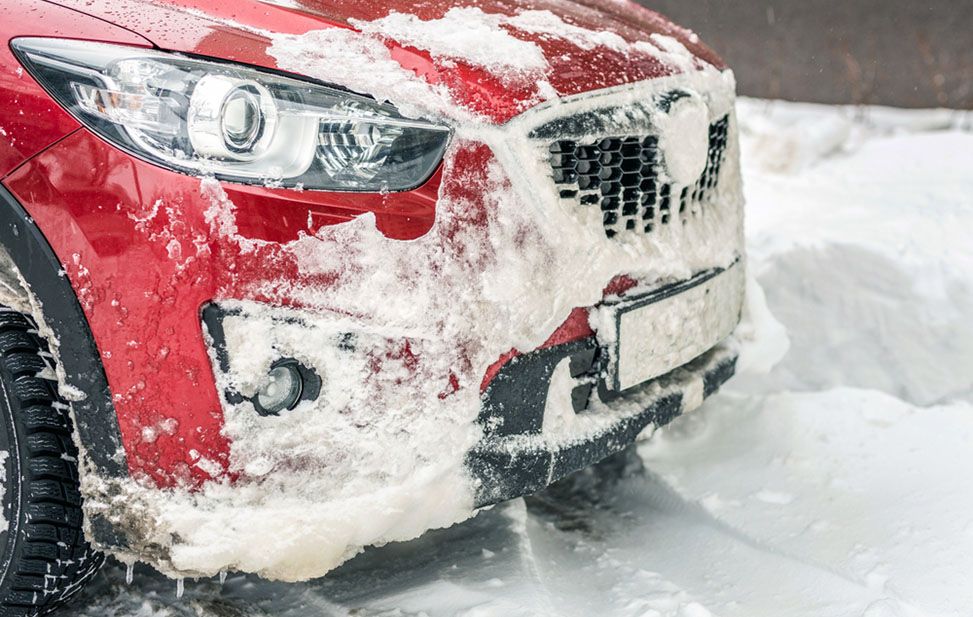
Protection from the Elements
There is no need to worry about rain falling on your car and bringing pollutants onto the paintwork. You also don’t need to invest in a garage because your car cover typically features a reflective outer coating and an insulating layer, which prevents harmful UV rays and extremely low temperatures from wreaking havoc on your paintwork. Car covers are also durable, so there is no need to pay for an expensive wax covering to protect your car’s exterior. You can also choose a vehicle covering that is best suited to your state’s climate.
User-Friendly
High-quality car covers tend to be lightweight and come with an elastic hem, so it only takes one person to put them on and remove them from a vehicle. This feature makes them ideal for use while you are at work. Cars can be outside for many hours while their owner is in the office. However, by placing your covering over your vehicle before beginning your shift, you can protect it from the elements.
Cost-Effective
Many owners attempt to protect their cars by paying for expensive paintwork coatings, only to find they need to reapply the protective layer when it wears down. Car covers represent a one-off investment to protect your vehicle, making it a more affordable choice long-term. At CarCovers.com, we offer industry-leading 5-year warranties on our semi-custom car covers to give you peace of mind.
Wide Range of Choice
There are many choices when determining which car cover is best for your needs. When searching for the best all weather car cover on the market, there are several vital considerations.
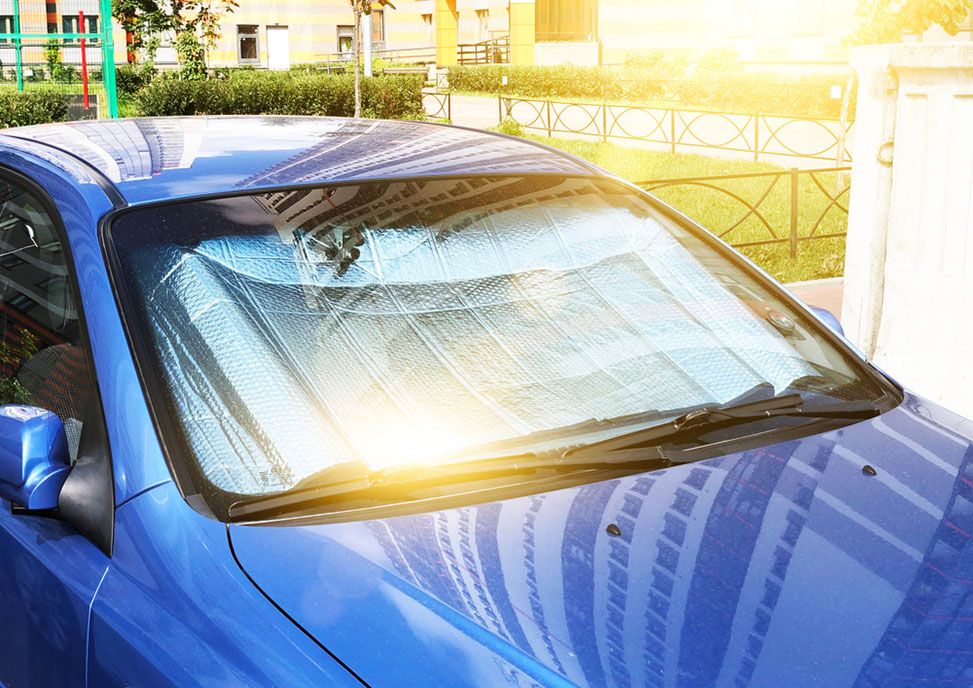
- • Car Cover Fittings
Universal fit car covers can fit over just about any vehicle, but they are ineffective. The covering is too loose to retain heat, and harmful contaminants could enter under the material. These covers also tend to blow about in the rain, and, in some cases, they can lift entirely off the car. A practical alternative is to purchase a semi-custom fit car cover that matches your vehicle’s length, width, and height. Elastic front and rear hems hold the covering tight over the front and rear bumpers, keeping your car safe from potentially damaging elements.
If you are willing to invest more money and wait slightly longer for delivery, you can purchase a fully custom-fit car cover. These coverings fit precisely with your vehicle’s contours, reducing the risk of contaminants finding gaps to make contact with your car. Most of these covers also have mirror and antenna pockets for a precise fit.
Protect Your Vehicle with a Quality Car Cover
- • Car Cover Materials
The construction material is one of the most significant considerations when choosing your car cover. Inferior materials wear out quickly and may not prevent harmful contaminants from penetrating their layers. You can purchase coverings that use durable polyester or polypropylene to provide superior protection in all weather conditions. If you seek extra security for a vehicle you keep in a garage, you can opt for a softer satin covering suitable for indoor use. In colder climates, it’s a good idea to look for a car cover that comes with a fleece lining. This feature reduces unnecessary heat loss and lowers the risk of bubbling on your paintwork.
When covering your car in windy weather, you want to ensure the cover won’t blow off and leave your vehicle exposed to the elements. You can buy a car cover that comes with a cable and lock that secures your covering to a stable surface. It’s essential to check the grommets are strong, so the material doesn’t tear in exceptionally windy conditions. It’s also helpful if your car cover comes with a storage bag so you can pack it away neatly when not in use.
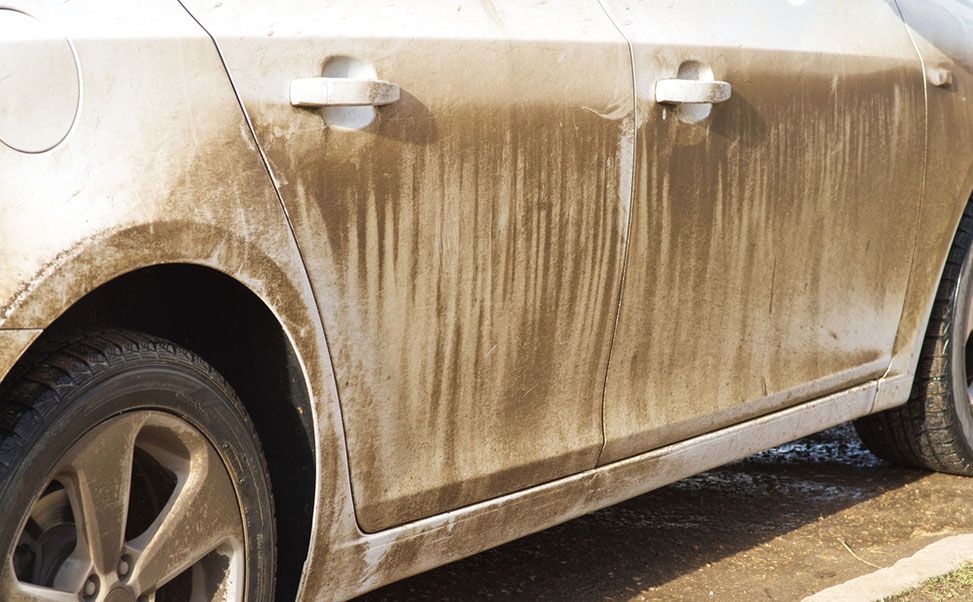
Protect Your Car in Any Weather
Numerous climate conditions can damage your car. Although it’s possible to reduce the risk of damage by taking some preventative measures, using a car cover remains the best way to protect your vehicle. A high-quality car cover fits neatly on your vehicle and offers superior protection against a range of harmful weather conditions. It’s vital to deal with a reputable supplier who has the required expertise to provide the best fitting cover for your car. CarCovers.com provides semi-fit and custom fit covering using premium quality materials. If you’re looking for a market-leading car cover supplier, contact CarCovers.com today.
Updated